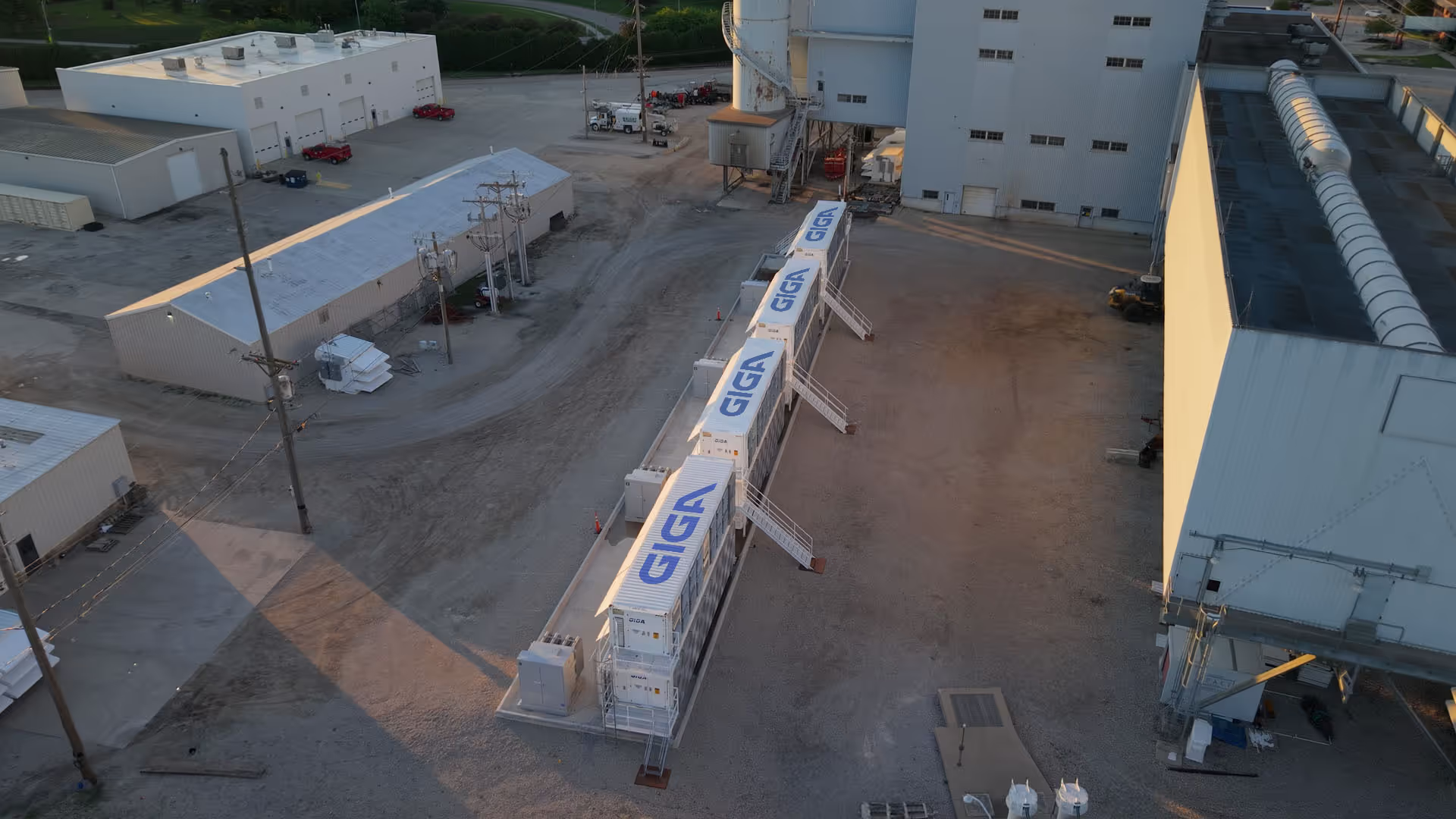A Bitcoin mining operation is only as strong as the data center behind it. From the transformers that power them to cooling systems, every choice you make about your data center setup will affect everything that comes after: mining performance, uptime, quality, and costs.
In this guide, we’ll break down key factors to consider when selecting or designing a mining data center so you’re prepared when it’s time to choose.
Power sources for data centers: Grid, renewables, and beyond
Bitcoin mining requires steady, affordable electricity to keep rigs running nonstop. While most centers tap into the local grid, not all grids perform the same. Unstable grids lead to voltage drops or outages, which can cause machines to shut down or reset.
To optimize energy expenses, it’s smart to prioritize areas with access to favorable industrial rates or interruptible pricing plans. These pricing structures are designed for high-usage customers and can significantly reduce operational costs, particularly if your setup allows for occasional pauses in activity.
In parallel, renewable energy options like wind and solar have become more attractive. They offer long-term cost benefits and align with sustainability goals. Some miners pursue power purchase agreements (PPAs) with renewable energy providers to lock in low-cost power. However, renewables alone often introduce some variables that make things less predictable, such as cloud cover and low wind speeds.
To maintain uptime, many miners are turning to hybrid power models. These combine renewable energy with either traditional grid access or alternative on-site generation sources like flared natural gas. This model gives operators flexibility: use renewables when they’re available, and fall back on reliable baseload power when they’re not.
For example, a mining farm in West Texas might rely on solar during daylight hours and then switch to grid or gas power overnight. Others may build near oil fields to harness flared gas that would otherwise be burned off, turning a byproduct into productive energy.
Beyond environmental benefits, this strategy gives miners greater control over their energy supply. In areas with weak or overloaded grid infrastructure, on-site generation acts as a safeguard, ensuring uptime even during public grid disruptions.
Choosing between mobile and stationary data centers
Your site location and project timeline shape the kind of data center you need. Mobile data centers, often built in shipping-container pods, work best for fast setups or short-term projects. They can be moved easily and are ideal for locations with temporary land access or on-site energy sources.
Let’s say you have a six-month lease on land next to a flare site. A mobile pod will do the job — it lets you spin up mining rigs quickly and pull out when the lease ends. Depending on the jurisdiction, you may need to pour concrete, but infrastructure costs still tend to be lower for mobile data centers.
Stationary centers, on the other hand, require more planning and infrastructure. These builds often include more robust cooling systems, higher-capacity electrical setups, and more permanent forms of physical protection, along with increased upfront and ongoing maintenance costs.
Efficiency and environmental impact
Efficiency directly affects your profit margins. Data centers consume a lot of power, not just for mining but for cooling and other systems. A useful metric here is PUE (power usage effectiveness). A PUE closer to 1.0 means more power goes to mining and less to support systems. Efficient centers aim for PUEs below 1.3.
To reach this, airflow must be carefully planned. Racks need even cooling to prevent hot spots, which wear out machines faster. Improper airflow can increase failure rates and power consumption. Some setups even install blanking panels and aisle containment to help direct cool air more efficiently.
Proper insulation and layout design also play a huge role in the whole process. Sealed floors and walls help keep dust and hot air from recirculating, which improves airflow and temperature control.
Cooling systems: Keeping machines from burning out
Without proper cooling, mining rigs overheat and shut down. This doesn’t just interrupt mining — it shortens equipment lifespan.
Good airflow is critical. Fans need to pull heat away fast, and dust filters must keep internal parts clean. Effective systems use high-volume fans and modular airflow zones. That means airflow can be focused where it's needed most instead of treating the whole center the same. Some systems split the center into hot and cold aisles, with directional airflow strategies to prevent heat mixing.
Heat sensors placed at inlets, exhausts, and key internal points help catch problems early. If a rack starts overheating, you can reroute cooling or shut down affected equipment before damage spreads.
It’s also important to consider environmental conditions. For example: dry, dusty environments demand more aggressive filtration. Giga’s cooling approach adapts to different climates and workload needs.
Different projects may require different types of cooling systems. Giga offers both air-cooled containers and liquid-cooled mobile data centers for all kinds of mining operations.
Quality of construction and materials
Mining is tough on hardware. Your data center has to withstand heat, dust, and continuous electrical loads. That starts with quality components.
Wiring should be copper, insulated, and grounded. Circuit breakers and power distribution units (PDUs) need to be UL-certified to show that they meet safety standards. Frames and walls must resist temperature changes and block moisture. Even something as basic as using galvanized steel for exterior walls can reduce corrosion over time.
Let’s say a breaker fails under sustained load. This doesn’t just cut power: it can damage expensive rigs and slow your entire operation. Cheap materials fail under stress, leading to downtime and repair costs.
Lead time and ease of deployment
In Bitcoin mining operations, speed of deployment makes a massive difference in how much you earn. If your data center arrives late or needs months of setup, you lose money every day you’re not online. That’s why prebuilt, plug-and-play setups work best. You should be able to rack and run machines on day one of energization.
Custom parts often delay projects as well. For example, sourcing a custom breaker box from overseas could take six weeks, and by then, your mining window might have closed. Giga avoids this by keeping key components like fans, PDUs, and breakers in stock and ready to ship, which reduces setup time and keeps your operation on schedule.
We also prewire systems for ease of installation. That means fewer contractors, faster assembly, and less room for installation error. In mining, the sooner you go live, the sooner you earn.
Common pitfalls and how to avoid them
Even well-designed data centers can fail if key details are overlooked. Here are some common issues and how to avoid them:
- Heat buildup: This often appears as gradually rising temperatures or frequent overheating alerts. It usually results from poor airflow planning or underpowered fans. Solve it with modular airflow zones and temperature sensors placed throughout your racks.
- Power tripping: Sudden equipment shutdowns can stem from mismatched PDUs or low-grade breakers. These interruptions not only hurt uptime but can wear out machines over time. Use properly rated, UL-listed components that match your load profile.
- Dust and moisture intrusion: Over time, unsealed enclosures allow dust and humidity to damage internal parts. This leads to fan failures, shorts, and even fire hazards. Always build with sealed frames and environmental protection suited to your climate.
- Cable management issues: Poor cabling blocks airflow and complicates maintenance. Avoid this by using structured trays and keeping wires out of airflow paths.
How Giga Energy stands out
Giga doesn’t just build data centers: we run our own projects, too. That means we know exactly what we need to focus on to optimize for uptime and performance, and our customers benefit from our experience.
We stock our own inventory of essential parts, so you’re not stuck waiting for fans or PDUs. Our airflow systems are modular and tested for real-world stress. Thermal monitoring catches heat issues early. Every breaker, cable, and panel is chosen for long-term use in remote, demanding environments.
We’ve also invested in field-tested designs. For example, our wiring harnesses are built to mil-spec standards, meaning they resist dust, moisture, and temperature swings. We also design enclosures with removable panels and easy service access, cutting down maintenance time. Because we’ve mined in remote fields and tight spaces, we know what can break or fail, and we’ve built around those problems. From sealed wiring harnesses to prewired panels, our setups are made for fast deployment and reliable operation.
But what sets us apart is not only our infrastructure: we also bring decades of industry experience and exceptional customer service to the table. We understand the many challenges of running a mining site, and we build our services based on giving each client the support they need throughout the process. Our support teams are all around the country and ready to assist with problems big and small.
Want help designing or deploying your next mining site? Reach out to our team so we can make sure you are on the right track.


